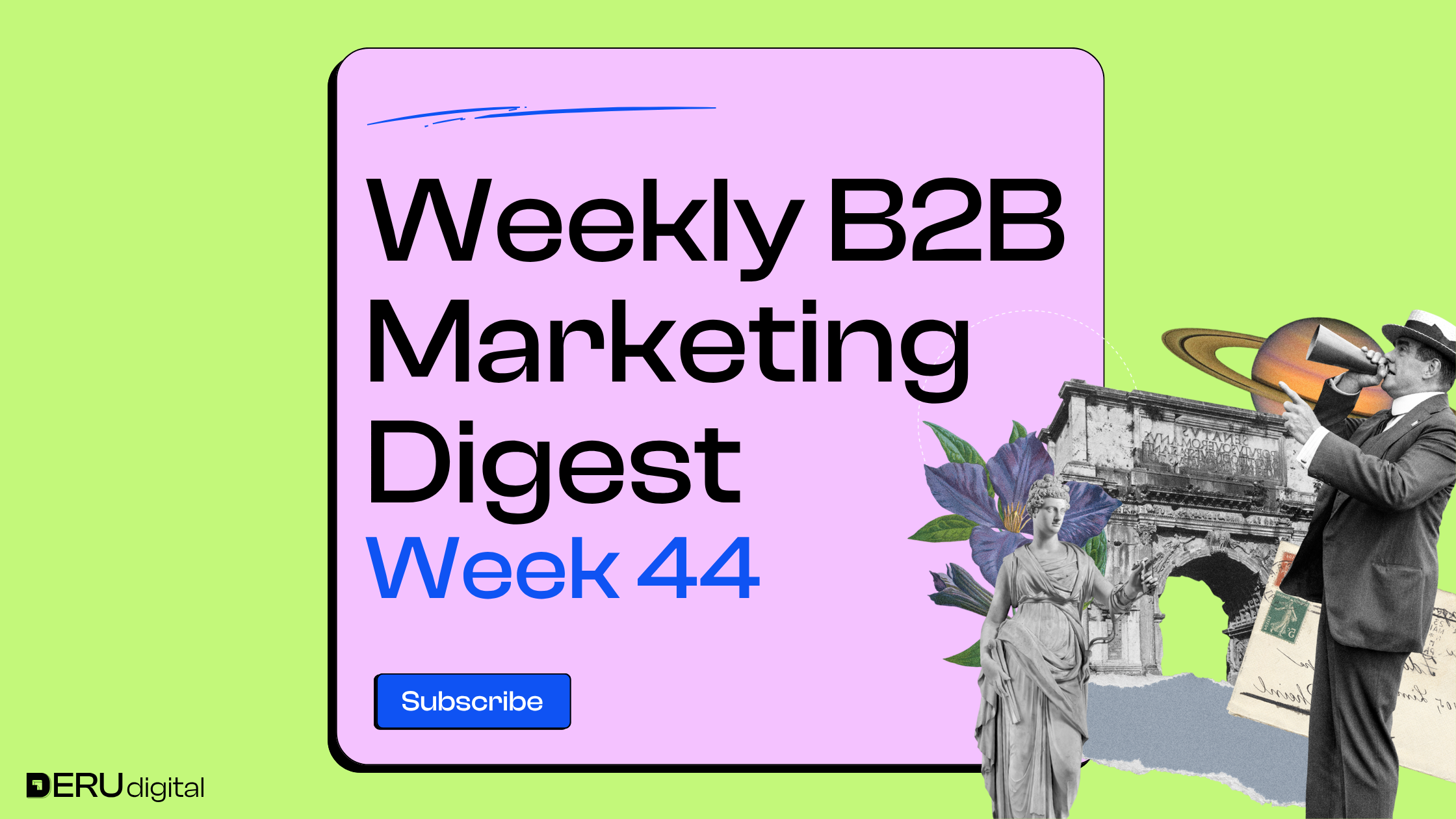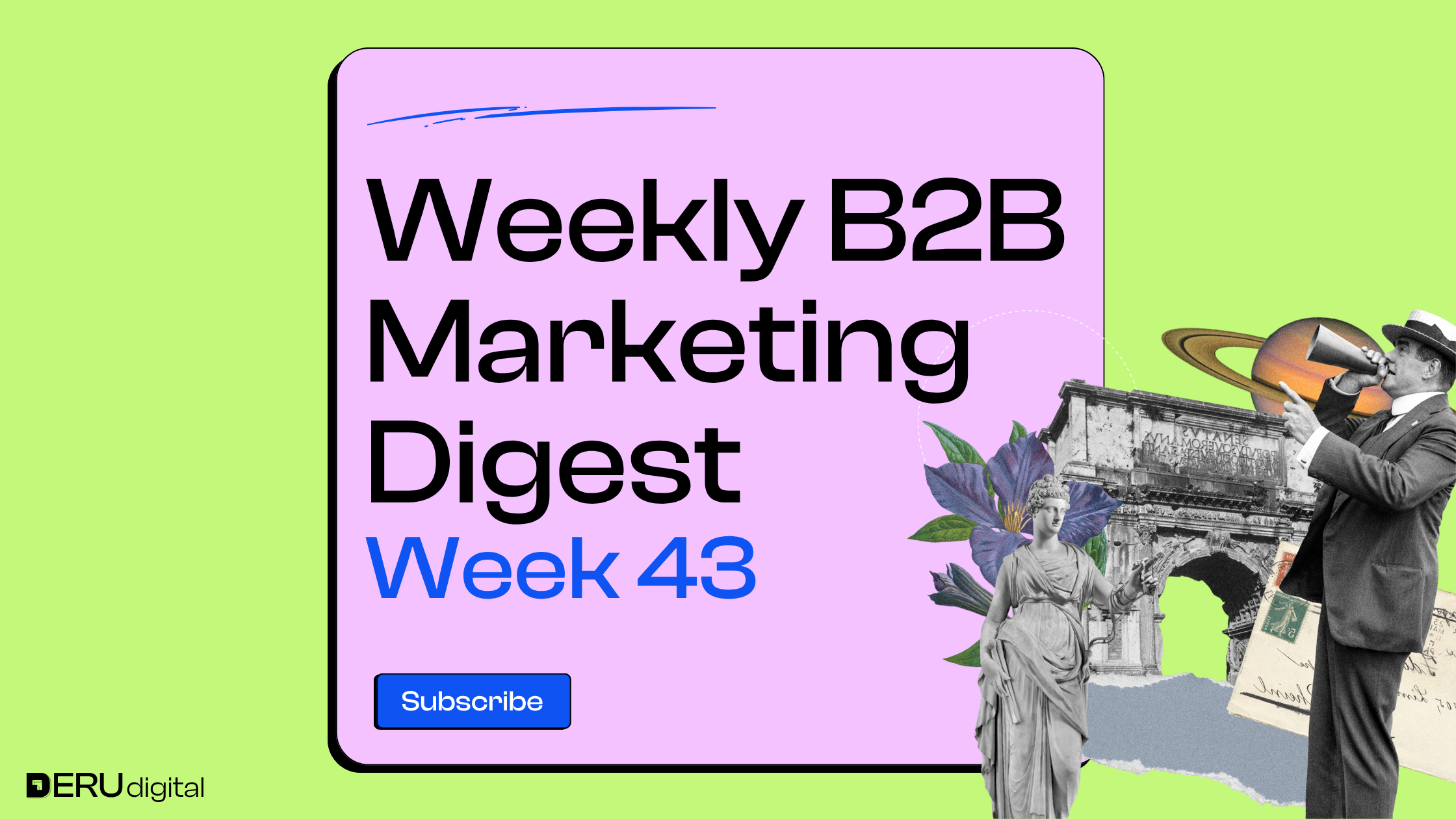



INSIGHTS FROM EXPERTS ON LINKEDIN
Kevin Goodwin talks about how much budget gets lost in channels that aren’t actually driving results, and how adjusting the media mix can turn things around. After shifting spend from Meta to TikTok, his team saw big lifts in new customer revenue and ROAS. He encourages brands to revisit their mix more often because the biggest channels aren’t always the ones helping you grow.

Nemanja Jovančić shares the story of a direct mail ABM campaign and how the mix of a well-crafted package, personalized content, and tight sales follow-up created real movement with enterprise accounts. The campaign sparked visits, replies, meetings, and eventually a customer. He shows how ABM works best when both teams show up consistently – not when marketing or sales tries to run it alone.

Rob Kaminski describes a conversation with a founder who wanted to position their company around outcomes but wasn’t willing to guarantee them. He shows how outcome claims only land when the business model and delivery make those results truly dependable. Without that, the message sounds like everyone else, and nothing stands out.

Ben Scandlen talks about how small brands set themselves up for failure when they try to run the same playbook as giants that already have decades of built-in recognition. He uses DUDE Wipes as an example of a brand that grew by choosing quieter channels and bold creative that actually gets noticed. Grow in a way that fits your size, not someone else’s.

Diego Chicharro 

James Hurman shares new research showing that most buying decisions are made long before someone starts shopping. The study highlights how prior exposure to a brand heavily influences who gets considered and who gets ignored. It’s a strong reminder that brands need to create demand early if they want to be chosen later.

Edvin Vosylius describes a sales call that went south the moment an AE pushed a “buy now or lose the discount” tactic. The forced urgency instantly broke trust and made the whole conversation feel off. He contrasts that with real urgency, the kind rooted in timelines, capacity, or competitive pressure, which actually helps buyers move forward.
WHAT'S NEW IN THE INDUSTRY
The study looks at what actually shapes brand choices and shows that most people buy brands they already lean toward. It also finds that different consumers and categories respond to touchpoints in very different ways, so influence depends heavily on context. Overall, it points to the value of long-term brand building, understanding who’s receptive, and using channels that can actually shift decisions.
This article explains why marketing performance often gets misread, mostly because teams track revenue instead of true incremental profit. It walks through how ROI should account for costs, margins, cash flow, and long-term customer value rather than short-term spikes. With marketing and finance working from the same assumptions, companies can make clearer decisions about where investment really pays off.
This report looks at why B2B brands need to show up in the right places, not just stay top-of-mind, especially as buying journeys get more fragmented. It highlights how presence, distinctive assets and a sharper product portfolio help brands stay visible where decisions really happen. Events, digital touchpoints and clear portfolio focus all play a bigger role than most marketers realize.

Reddit’s growth and its role in AI-driven search highlight a major gap in long-tail content, an opportunity for brands to step in by hosting their own forums or Q&A sites. User-generated discussions provide authentic, detailed answers that both search engines and LLMs rely on. With open-source tools making it simple to launch and manage forums, brands can secure their own conversations and engage their audiences directly, rather than leaving the space to competitors or external platforms.

Advertisers noticed Google automatically suggesting their social video ads for use in PMax through data sourced by Pathmatics, raising questions about permissions and control. Google says it’s only a test meant to help teams reuse strong creative across platforms. It hints at a future where PMax becomes more automated and more connected to outside asset sources


That’s the scoop for this week! If you found this valuable and any useful insights caught your eye, feel free to share them with your network.
Until next week!



